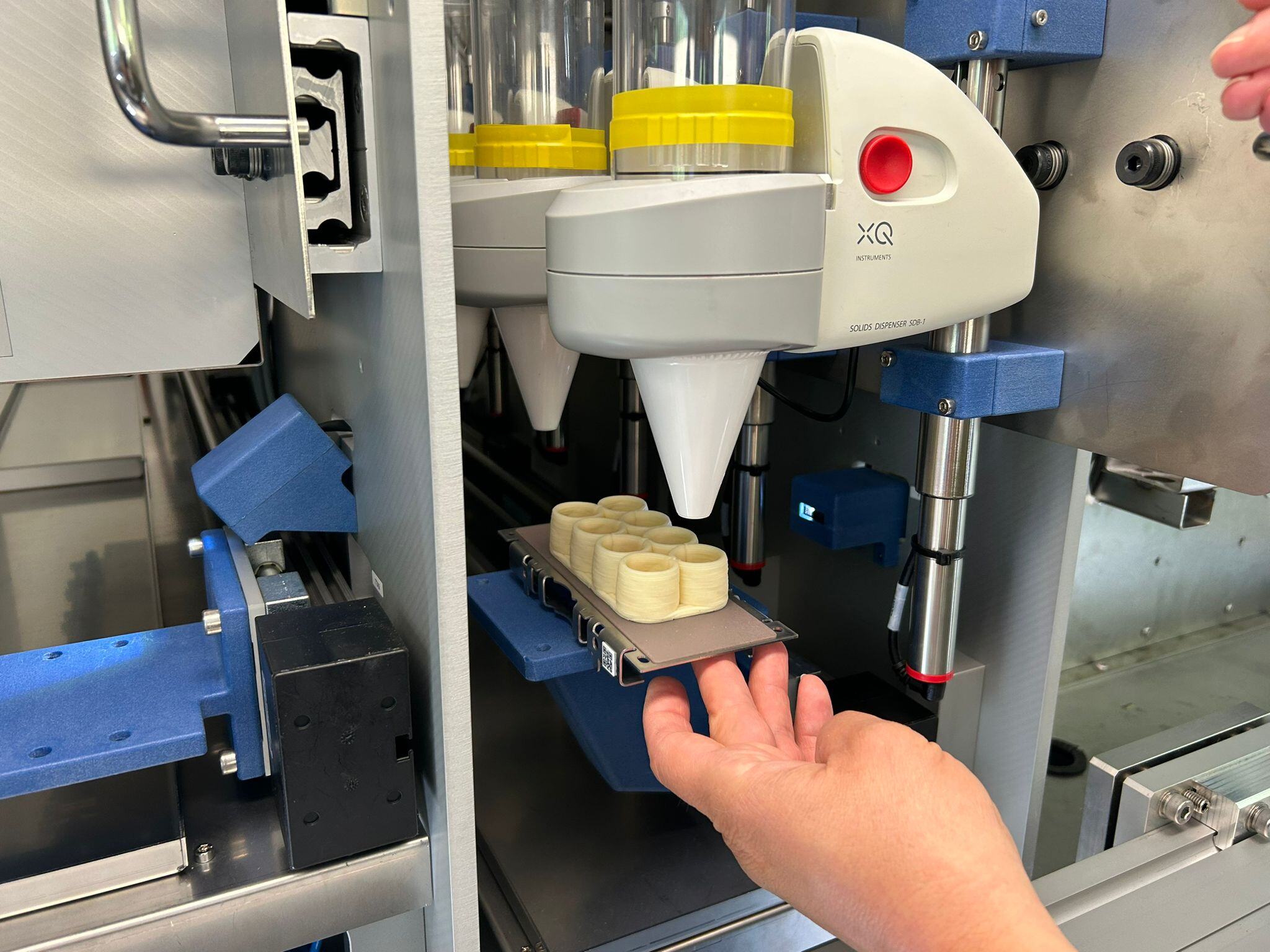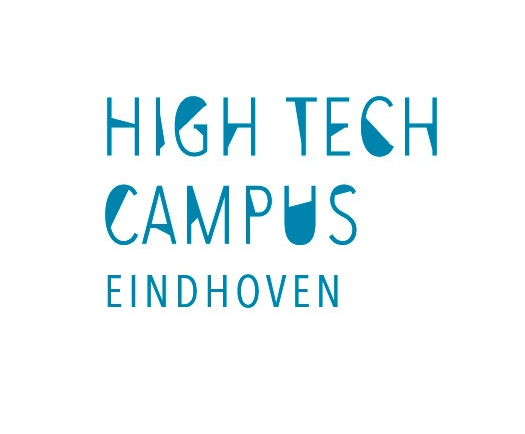



Once upon a time there was a camouflage container that sat between HTC 11 and HTC 25 on High Tech Campus. All the Campus residents were curious to know what kind of magic was happening inside. This is the tale of the mysterious container and the secrets – and magic – it holds.
High Tech Campus Eindhoven has been dubbed the “smartest square kilometer in Europe.” It’s where companies of the future turn technology into business. But it starts with researchers who imagine the impossible and turn it into reality.
That’s the case with the curious container located near HTC 25.
The HTCE marketing team was let in on a secret and visited the container earlier this spring to see what in the world is going on inside.
What we saw is the culmination of 10 years of research by TNO, an independent R&D institution focusing on applied science, in an automated 3D food printing personal nutrition machine.
We were transported back to the scene of the 2020 Netflix film “Midnight Sky,” when George Clooney prints his meal with HTC-based byFlow’s 3D food printer. Only this time, the food produced is rapid-printed with a machine TNO developed with seven national and international partners.
.jpeg?width=799&height=1065&name=WhatsApp%20Image%202024-07-09%20at%2016.43.28%20(1).jpeg)
In 2024, the real 3D food printing equipment is light years ahead of the fictional 2020 version.
The project is called IMAGINE: Innovation for the manufacturing and marketing of fully personalized food products and was a true collaboration of research institutes, specialized companies and multinationals to bring in specific expertise and materials as well support in the field labs.
The Dutch Ministry of Defense owns the mystery container on Campus. It’s called a mobile satellite kitchen, and it’s equipped with everything you need to feed troops in the field deployed far from a permanent base. Instead of stoves and ovens, however, TNO has replaced it with a fully automated 3D food printing operation which produces “Nutri-Bites.”
The project is currently in its first phase, and the TNO team has been working closely with the Ministry of Defense.
TNO has 25 participants of the Ministry in the first cohort (called Field Lab), which they follow for two weeks. Considering an individual’s health profile, such as age, weight, activity level and dietary restrictions, the bites are tailored to optimize factors such as energy, cognition and muscle recovery.
From the person’s profile, nutrition advisors develop a list of essential ingredients to create a bite-sized, nutritious food item with the precise amount of protein, fiber, fat, carbs and micronutrients.
Then, the machine goes to work.

The food “containers” are made of a special dough and fillings. The cups produced fit in the palm of your hand and are baked to match the personalized nutritional advice. The food is refrigerated and must be eaten within one to two hours as it’s produced with fresh ingredients.

The operation is fully automated, using robotics and 3D food printing technology developed at TNO. The collaboration includes a number of TNO partners. Japan-based Nissin and Wageningen Food & Biobased Research developed the doughs, which are enriched with special fibers. Into the dough cups go the micronutrients, which SoliPharma provides. American food giant General Mills provides a part of the fillings, and Tate & Lyle, a UK-based world leader in ingredient solutions for healthier food and beverages, provides the toppings and another part of the fillings. GEA, a leading equipment manufacturer, provides a part of the machine. Besides this, the Ministry of Defense and Hospital Gelderse Vallei are providing the support and set-up of the specific field labs.
Bart Fischer, TNO’s Senior Business Developer, and Jose van Uden, Project Manager 3D Food and Pharma Printing at TNO, took us through the process, demonstrating how a product moves through all the stages, starting with a tray of four, six or eight dough cups that moves automatically through “filling stations.”

The first stop is micronutrients, then fillings and toppings. Here’s the good news: toppings are not dosed based on nutritional advice but according to personal preference. Think of a yogurt bar where you start with yogurt and add everything you want on top. Only this is healthy and created just for you.
If you think this technology with its pulses, gears and pressure pumps is heavily dependent on sensors, you’d be wrong. It’s all calibrated in the setup, so the number of sensors is minimal.
The operation uses QR codes, which are scanned at every stage of the process as they move through the stations. The entire process – from baking the dough cups, adding micronutrients, fillings and toppings and cooling – only takes about 30 minutes. But operators can print in sequence. So, once a product is finished printing and is baking in the oven, another product is starting the printing process. At the end of the process, trays are placed in containers where they are refrigerated before distribution.
“We have complete control of the G code, the code that steers the machine,” said Jose. “The technology we own. We also tested all those up front. Because if the dough is too fluid, the product doesn’t stand up. If the dough is too hard, it can’t be printed. We know what the boundaries are. We know the limits and the parameters to make a good print.”
While the process is fully automated, the viscosity must be monitored by a specialist. It’s dependent on the atmosphere of the container, which is cooled at a steady temperature by its own air conditioning unit. This means the container can go into a desert with 45-degree temperatures and maintain 20 degrees, the outer temperature limit for optimal printing.
Once this phase of the test lab is finished with the Ministry of Defense, the container will produce for Gelderse Vallei Hospital in Ede. The team will produce Nutri-Bites for patients, who will be tracked for one or two days, given their time at the hospital. This field lab will be a close cooperation with the medical team, nutritionists and dieticians in preparation and execution. In addition, the main focus of the Nutri-Bite will be on speeding up recovery as well as cognition, immune health and preserving muscle.
This is a complex piece of equipment, with use cases from the military to patients and athletes. This doesn’t mean TNO is adding production to its core R&D mission.
If an additional user group is interested in one of these machines, “We could build a copy. But we don’t build five copies,” said Bart. It’s up to the client to use TNO’s design under a licensing agreement and, for example, tap into the high tech equipment production knowledge widely available in the region.
“What do you need to make it perfect? Nothing. Our department already has extensive experience in printing food, and we see this as the next step in the evolution. People would like personalization also in their food and this technology enables this,” said Bart.
Here are just some of the innovations that make the TNO tech possible:
The future of food
This project represents a significant step forward in personalized nutrition. The ability to create customized meals on demand has the potential to improve health outcomes for people in many situations. As the technology continues to develop, we can expect to see even wider applications in the future of food.